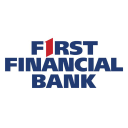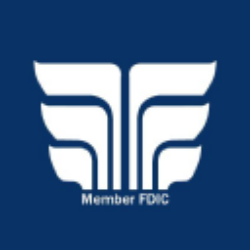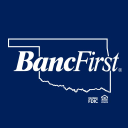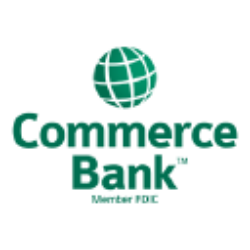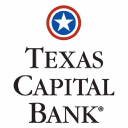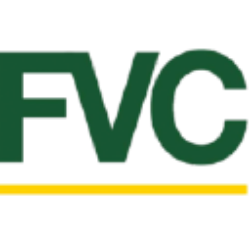BOKF

BOK Financial Corporation
BOKF
(1.8)108,93 USD
0.95% ROA
8.88% ROE
14.1x PER
6.592.979.015,00 USD
142.92% DER
2.14% Yield
16.27% NPM
BOK Financial Corporation Stock Analysis
BOK Financial Corporation Fundamental Analysis
Fundamental analysis in stock investing is like studying the foundation of a house before buying it. It involves looking at a company's financial health, like its earnings, assets, and debts, to determine if it's a good investment based on its fundamental strength and potential for growth.
| # | Analysis | Rating |
|---|---|---|
| 1 |
Dividend
The company's consistent dividend distribution over the past five years reflects its dedication to providing shareholders with steady returns, making it an appealing choice for investors seeking income stability. |
|
| 2 |
ROE
ROE in an average range (12.82%) suggests satisfactory profitability and decent utilization of shareholders' equity. |
|
| 3 |
ROA
The stock's ROA (1.3%) indicates that it's doing well in making money from the things it owns. This makes it a good option to invest and make consistent profits. |
|
| 4 |
PBV
The stock's PBV ratio (1.01x) indicates a justifiable valuation, presenting a compelling choice for investors seeking reasonable returns. |
|
| 5 |
Graham Number
The company's Graham number suggests that its stock price is underestimated, implying that it may present a compelling investment opportunity. |
|
| 6 |
Buffet Intrinsic Value
The company's stock presents an enticing opportunity as it appears undervalued (265) by Warren Buffett's formula, indicating that its intrinsic value exceeds the market price. |
|
| 7 |
DER
The stock is burdened with a heavy load of debt (132%), making it financially unstable and potentially risky for investors. |
|
| 8 |
Revenue Growth
Company has experienced no growth in revenue over the past three years, suggesting limited profitability and making it a less desirable investment opportunity. |
|
| 9 |
Net Profit Growth
This company's net profit has remained flat over the past five years, suggesting a lack of growth and making it a less attractive investment opportunity. |
|
| 10 |
Assets Growth
Company has experienced no growth in revenue over the past three years, suggesting limited profitability and making it a less desirable investment opportunity. |
|
| 11 |
Dividend Growth
Investors should note the company's stagnant dividend growth over the past three years, indicating limited profitability and potentially diminishing returns. |
BOK Financial Corporation Technical Analysis
Technical analysis in stock investing is like reading the patterns on a weather map to predict future weather conditions. It involves studying past stock price movements and trading volumes to make predictions about where a stock's price might go next, without necessarily looking at the company's financial health.
| # | Analysis | Recommendation |
|---|---|---|
| 1 | Awesome Oscillator | Buy |
| 2 | MACD | Buy |
| 3 | RSI | Hold |
| 4 | Stoch RSI | Sell |
BOK Financial Corporation Price Chart
Financial Statements
Financial statements are like report cards for companies. They show how much money a company makes (income statement), what it owns and owes (balance sheet), and where it spends its money (cash flow statement), helping stock investors understand if a company is healthy and worth investing in.
Income Statements
An income statement for a company is like a scoreboard for its profits and losses. It shows how much money the company made (revenue) and how much it spent to make that money (expenses), helping stock investors see if a company is making a profit or not.
Revenue in stock investing is the total amount of money a company earns from its sales, and it's a key factor that investors consider to assess a company's financial performance and growth potential.
| Year | Revenue | Growth |
|---|---|---|
| 1991 | 69.600.000 | |
| 1992 | 138.900.000 | 49.89% |
| 1993 | 170.200.000 | 18.39% |
| 1994 | 193.400.000 | 12% |
| 1995 | 206.400.000 | 6.3% |
| 1996 | 232.700.000 | 11.3% |
| 1997 | 285.300.000 | 18.44% |
| 1998 | 355.100.000 | 19.66% |
| 1999 | 424.600.000 | 16.37% |
| 2000 | 467.790.000 | 9.23% |
| 2001 | 590.112.000 | 20.73% |
| 2002 | 692.198.000 | 14.75% |
| 2003 | 693.021.000 | 0.12% |
| 2004 | 732.133.000 | 5.34% |
| 2005 | 796.287.000 | 8.06% |
| 2006 | 858.311.000 | 7.23% |
| 2007 | 943.133.000 | 8.99% |
| 2008 | 1.083.138.000 | 12.93% |
| 2009 | 1.237.767.000 | 12.49% |
| 2010 | 1.257.769.000 | 1.59% |
| 2011 | 1.859.529.000 | 32.36% |
| 2012 | 1.331.472.000 | -39.66% |
| 2013 | 1.257.861.000 | -5.85% |
| 2014 | 1.247.972.000 | -0.79% |
| 2015 | 1.331.210.000 | 6.25% |
| 2016 | 1.359.861.000 | 2.11% |
| 2017 | 1.483.939.000 | 8.36% |
| 2018 | 1.555.353.000 | 4.59% |
| 2019 | 1.747.213.000 | 10.98% |
| 2020 | 1.888.007.000 | 7.46% |
| 2021 | 1.831.110.000 | -3.11% |
| 2022 | 1.818.803.000 | -0.68% |
| 2023 | 1.962.764.000 | 7.33% |
| 2023 | 1.974.810.000 | 0.61% |
| 2024 | 3.730.700.000 | 47.07% |
Research and Development Expenses are the costs a company incurs to create and improve its products or services, which can be important for investors to evaluate a company's innovation and potential for future growth.
| Year | Research and Development Expenses | Growth |
|---|---|---|
| 1991 | 0 | |
| 1992 | 0 | 0% |
| 1993 | 0 | 0% |
| 1994 | 0 | 0% |
| 1995 | 0 | 0% |
| 1996 | 0 | 0% |
| 1997 | 0 | 0% |
| 1998 | 0 | 0% |
| 1999 | 0 | 0% |
| 2000 | 0 | 0% |
| 2001 | 0 | 0% |
| 2002 | 0 | 0% |
| 2003 | 0 | 0% |
| 2004 | 0 | 0% |
| 2005 | 0 | 0% |
| 2006 | 0 | 0% |
| 2007 | 0 | 0% |
| 2008 | 0 | 0% |
| 2009 | 0 | 0% |
| 2010 | 0 | 0% |
| 2011 | 0 | 0% |
| 2012 | 0 | 0% |
| 2013 | 0 | 0% |
| 2014 | 0 | 0% |
| 2015 | 0 | 0% |
| 2016 | 0 | 0% |
| 2017 | 0 | 0% |
| 2018 | 0 | 0% |
| 2019 | 0 | 0% |
| 2020 | 0 | 0% |
| 2021 | 0 | 0% |
| 2022 | 0 | 0% |
| 2023 | 0 | 0% |
| 2023 | 0 | 0% |
| 2024 | 0 | 0% |
General and Administrative Expenses are the costs a company incurs to run its day-to-day operations, such as office rent, salaries, and utilities, which investors consider to understand a company's overall efficiency and management effectiveness.
| Year | General and Administrative Expenses | Growth |
|---|---|---|
| 1991 | 26.100.000 | |
| 1992 | 49.200.000 | 46.95% |
| 1993 | 57.400.000 | 14.29% |
| 1994 | 63.100.000 | 9.03% |
| 1995 | 67.300.000 | 6.24% |
| 1996 | 71.900.000 | 6.4% |
| 1997 | 87.700.000 | 18.02% |
| 1998 | 106.000.000 | 17.26% |
| 1999 | 136.000.000 | 22.06% |
| 2000 | 146.215.000 | 6.99% |
| 2001 | 163.835.000 | 10.75% |
| 2002 | 183.314.000 | 10.63% |
| 2003 | 222.922.000 | 17.77% |
| 2004 | 240.661.000 | 7.37% |
| 2005 | 258.971.000 | 7.07% |
| 2006 | 296.260.000 | 12.59% |
| 2007 | 328.705.000 | 9.87% |
| 2008 | 16.433.000 | -1900.27% |
| 2009 | 538.113.000 | 96.95% |
| 2010 | 568.340.000 | 5.32% |
| 2011 | 593.788.000 | 4.29% |
| 2012 | 520.617.000 | -14.05% |
| 2013 | 535.232.000 | 2.73% |
| 2014 | 509.027.000 | -5.15% |
| 2015 | 557.360.000 | 8.67% |
| 2016 | 601.192.000 | 7.29% |
| 2017 | 608.750.000 | 1.24% |
| 2018 | 623.618.000 | 2.38% |
| 2019 | 697.988.000 | 10.65% |
| 2020 | 723.525.000 | 3.53% |
| 2021 | 725.481.000 | 0.27% |
| 2022 | 688.912.000 | -5.31% |
| 2023 | 795.148.000 | 13.36% |
| 2023 | 841.163.000 | 5.47% |
| 2024 | 798.388.000 | -5.36% |
EBITDA stands for Earnings Before Interest, Taxes, Depreciation, and Amortization. It is a measure that helps stock investors analyze a company's profitability by looking at its earnings without considering certain expenses. This helps to get a clearer picture of the company's financial performance and its ability to generate cash flow.
| Year | EBITDA | Growth |
|---|---|---|
| 1991 | 0 | |
| 1992 | 0 | 0% |
| 1993 | 0 | 0% |
| 1994 | 0 | 0% |
| 1995 | 0 | 0% |
| 1996 | 0 | 0% |
| 1997 | 0 | 0% |
| 1998 | 0 | 0% |
| 1999 | 0 | 0% |
| 2000 | 0 | 0% |
| 2001 | 0 | 0% |
| 2002 | 0 | 0% |
| 2003 | 0 | 0% |
| 2004 | 361.260.000 | 100% |
| 2005 | 455.876.000 | 20.75% |
| 2006 | 519.462.000 | 12.24% |
| 2007 | 580.455.000 | 10.51% |
| 2008 | 395.282.000 | -46.85% |
| 2009 | 398.492.000 | 0.81% |
| 2010 | 0 | 0% |
| 2011 | 0 | 0% |
| 2012 | 0 | 0% |
| 2013 | 0 | 0% |
| 2014 | 0 | 0% |
| 2015 | 0 | 0% |
| 2016 | 11.428.000 | 100% |
| 2017 | 133.334.000 | 91.43% |
| 2018 | 444.942.000 | 70.03% |
| 2019 | 651.834.000 | 31.74% |
| 2020 | 238.449.000 | -173.36% |
| 2021 | 246.350.000 | 3.21% |
| 2022 | 559.944.000 | 56% |
| 2023 | 684.900.000 | 18.24% |
| 2023 | 765.830.000 | 10.57% |
| 2024 | -101.784.000 | 852.41% |
Gross profit is the money a company makes from selling its products or services after subtracting the cost of producing or providing them, and it is an important measure for investors to understand a company's profitability.
| Year | Gross Profit | Growth |
|---|---|---|
| 1991 | 69.600.000 | |
| 1992 | 138.900.000 | 49.89% |
| 1993 | 170.200.000 | 18.39% |
| 1994 | 193.400.000 | 12% |
| 1995 | 206.400.000 | 6.3% |
| 1996 | 232.700.000 | 11.3% |
| 1997 | 285.300.000 | 18.44% |
| 1998 | 355.100.000 | 19.66% |
| 1999 | 424.600.000 | 16.37% |
| 2000 | 467.790.000 | 9.23% |
| 2001 | 590.112.000 | 20.73% |
| 2002 | 692.198.000 | 14.75% |
| 2003 | 693.021.000 | 0.12% |
| 2004 | 732.133.000 | 5.34% |
| 2005 | 796.287.000 | 8.06% |
| 2006 | 858.311.000 | 7.23% |
| 2007 | 943.133.000 | 8.99% |
| 2008 | 1.083.138.000 | 12.93% |
| 2009 | 1.237.767.000 | 12.49% |
| 2010 | 667.556.000 | -85.42% |
| 2011 | 1.219.071.000 | 45.24% |
| 2012 | 595.708.000 | -104.64% |
| 2013 | 570.188.000 | -4.48% |
| 2014 | 554.116.000 | -2.9% |
| 2015 | 583.982.000 | 5.11% |
| 2016 | 598.955.000 | 2.5% |
| 2017 | 695.589.000 | 13.89% |
| 2018 | 830.968.000 | 16.29% |
| 2019 | 921.950.000 | 9.87% |
| 2020 | 910.893.000 | -1.21% |
| 2021 | 948.437.000 | 3.96% |
| 2022 | 1.042.987.000 | 9.07% |
| 2023 | 1.025.928.000 | -1.66% |
| 2023 | 1.049.477.000 | 2.24% |
| 2024 | 3.598.128.000 | 70.83% |
Net income in stock investing is like the money a company actually gets to keep as profit after paying all its bills, and it's an important measure to understand how well a company is doing financially.
| Year | Net Profit | Growth |
|---|---|---|
| 1991 | 8.500.000 | |
| 1992 | 25.600.000 | 66.8% |
| 1993 | 35.800.000 | 28.49% |
| 1994 | 45.100.000 | 20.62% |
| 1995 | 49.200.000 | 8.33% |
| 1996 | 54.100.000 | 9.06% |
| 1997 | 64.600.000 | 16.25% |
| 1998 | 74.700.000 | 13.52% |
| 1999 | 89.200.000 | 16.26% |
| 2000 | 100.140.000 | 10.92% |
| 2001 | 116.302.000 | 13.9% |
| 2002 | 150.409.000 | 22.68% |
| 2003 | 158.360.000 | 5.02% |
| 2004 | 179.023.000 | 11.54% |
| 2005 | 201.505.000 | 11.16% |
| 2006 | 212.977.000 | 5.39% |
| 2007 | 217.664.000 | 2.15% |
| 2008 | 153.232.000 | -42.05% |
| 2009 | 200.578.000 | 23.6% |
| 2010 | 246.754.000 | 18.71% |
| 2011 | 285.875.000 | 13.68% |
| 2012 | 351.191.000 | 18.6% |
| 2013 | 316.609.000 | -10.92% |
| 2014 | 292.435.000 | -8.27% |
| 2015 | 288.565.000 | -1.34% |
| 2016 | 232.668.000 | -24.02% |
| 2017 | 334.644.000 | 30.47% |
| 2018 | 445.646.000 | 24.91% |
| 2019 | 500.758.000 | 11.01% |
| 2020 | 435.030.000 | -15.11% |
| 2021 | 618.121.000 | 29.62% |
| 2022 | 520.273.000 | -18.81% |
| 2023 | 537.980.000 | 3.29% |
| 2023 | 530.746.000 | -1.36% |
| 2024 | 654.852.000 | 18.95% |
EPS, or earnings per share, is a measure that shows how much profit a company has earned for each outstanding share of its stock, and it is important for stock investors as it helps understand the profitability of a company and compare it with other companies in the market.
| Year | Earning per Share (EPS) | Growth |
|---|---|---|
| 1991 | 0 | |
| 1992 | 1 | 0% |
| 1993 | 1 | 0% |
| 1994 | 1 | 0% |
| 1995 | 1 | 0% |
| 1996 | 1 | 100% |
| 1997 | 1 | 0% |
| 1998 | 1 | 0% |
| 1999 | 2 | 0% |
| 2000 | 2 | 0% |
| 2001 | 2 | 50% |
| 2002 | 3 | 0% |
| 2003 | 3 | 0% |
| 2004 | 3 | 33.33% |
| 2005 | 3 | 0% |
| 2006 | 3 | 0% |
| 2007 | 3 | 0% |
| 2008 | 2 | -50% |
| 2009 | 3 | 0% |
| 2010 | 4 | 33.33% |
| 2011 | 4 | 25% |
| 2012 | 5 | 20% |
| 2013 | 5 | -25% |
| 2014 | 4 | 0% |
| 2015 | 4 | 0% |
| 2016 | 4 | -33.33% |
| 2017 | 5 | 40% |
| 2018 | 7 | 16.67% |
| 2019 | 7 | 14.29% |
| 2020 | 6 | -16.67% |
| 2021 | 9 | 25% |
| 2022 | 8 | -14.29% |
| 2023 | 8 | 12.5% |
| 2023 | 8 | -14.29% |
| 2024 | 10 | 30% |
Cashflow Statements
Cashflow statements show the movement of money in and out of a company, helping stock investors understand how much money a company makes and spends. By examining cashflow statements, investors can assess if a company is generating enough cash to pay its bills, invest in growth, and provide returns to stockholders.
Free cash flow is the leftover cash that a company generates after covering its operating expenses and capital expenditures, which is important for stock investors as it shows how much money a company has available to invest in growth, pay dividends, or reduce debt.
| Year | Free Cashflow | Growth |
|---|---|---|
| 1991 | -19.300.000 | |
| 1992 | 15.300.000 | 226.14% |
| 1993 | -83.600.000 | 118.3% |
| 1994 | 176.700.000 | 147.31% |
| 1995 | -9.900.000 | 1884.85% |
| 1996 | 19.500.000 | 150.77% |
| 1997 | 54.900.000 | 64.48% |
| 1998 | 8.100.000 | -577.78% |
| 1999 | 106.400.000 | 92.39% |
| 2000 | 85.195.000 | -24.89% |
| 2001 | 205.811.000 | 58.61% |
| 2002 | 196.864.000 | -4.54% |
| 2003 | 219.435.000 | 10.29% |
| 2004 | 223.717.000 | 1.91% |
| 2005 | 161.332.000 | -38.67% |
| 2006 | 172.881.000 | 6.68% |
| 2007 | 286.118.000 | 39.58% |
| 2008 | 82.065.000 | -248.65% |
| 2009 | 281.016.000 | 70.8% |
| 2010 | 333.857.000 | 15.83% |
| 2011 | 327.788.000 | -1.85% |
| 2012 | -485.225.000 | 167.55% |
| 2013 | 294.846.000 | 264.57% |
| 2014 | -1.383.625.000 | 121.31% |
| 2015 | -1.386.025.000 | 0.17% |
| 2016 | -715.059.000 | -93.83% |
| 2017 | -35.852.000 | -1894.47% |
| 2018 | -2.105.039.000 | 98.3% |
| 2019 | -858.318.000 | -145.25% |
| 2020 | -557.390.000 | -53.99% |
| 2021 | -3.896.864.000 | 85.7% |
| 2022 | 4.907.224.000 | 179.41% |
| 2023 | -1.283.717.000 | 482.27% |
| 2023 | 0 | 0% |
| 2024 | 188.189.000 | 100% |
Operating cash flow represents the cash generated or consumed by a company's day-to-day operations, excluding external investing or financing activities, and is crucial for stock investors as it shows how much cash a company is generating from its core business operations.
| Year | Operating Cashflow | Growth |
|---|---|---|
| 1991 | -17.400.000 | |
| 1992 | 21.200.000 | 182.08% |
| 1993 | -77.000.000 | 127.53% |
| 1994 | 205.900.000 | 137.4% |
| 1995 | 23.000.000 | -795.22% |
| 1996 | 55.900.000 | 58.86% |
| 1997 | 129.200.000 | 56.73% |
| 1998 | 52.500.000 | -146.1% |
| 1999 | 200.200.000 | 73.78% |
| 2000 | 184.017.000 | -8.79% |
| 2001 | 281.466.000 | 34.62% |
| 2002 | 248.113.000 | -13.44% |
| 2003 | 282.361.000 | 12.13% |
| 2004 | 258.121.000 | -9.39% |
| 2005 | 210.531.000 | -22.6% |
| 2006 | 145.670.000 | -44.53% |
| 2007 | 237.777.000 | 38.74% |
| 2008 | 82.065.000 | -189.74% |
| 2009 | 281.016.000 | 70.8% |
| 2010 | 365.178.000 | 23.05% |
| 2011 | 327.788.000 | -11.41% |
| 2012 | 591.850.000 | 44.62% |
| 2013 | 736.320.000 | 19.62% |
| 2014 | -36.630.000 | 2110.16% |
| 2015 | 295.010.000 | 112.42% |
| 2016 | -93.454.000 | 415.67% |
| 2017 | 214.931.000 | 143.48% |
| 2018 | -552.006.000 | 138.94% |
| 2019 | -473.679.000 | -16.54% |
| 2020 | -416.256.000 | -13.8% |
| 2021 | -3.692.577.000 | 88.73% |
| 2022 | 5.122.270.000 | 172.09% |
| 2023 | 66.183.000 | -7639.56% |
| 2023 | 0 | 0% |
| 2024 | 234.547.000 | 100% |
Capex, short for capital expenditures, refers to the money a company spends on acquiring or upgrading tangible assets like buildings, equipment, or technology, which is important for stock investors as it indicates how much a company is investing in its infrastructure to support future growth and profitability.
| Year | Capital Expenditure | Growth |
|---|---|---|
| 1991 | 1.900.000 | |
| 1992 | 5.900.000 | 67.8% |
| 1993 | 6.600.000 | 10.61% |
| 1994 | 29.200.000 | 77.4% |
| 1995 | 32.900.000 | 11.25% |
| 1996 | 36.400.000 | 9.62% |
| 1997 | 74.300.000 | 51.01% |
| 1998 | 44.400.000 | -67.34% |
| 1999 | 93.800.000 | 52.67% |
| 2000 | 98.822.000 | 5.08% |
| 2001 | 75.655.000 | -30.62% |
| 2002 | 51.249.000 | -47.62% |
| 2003 | 62.926.000 | 18.56% |
| 2004 | 34.404.000 | -82.9% |
| 2005 | 49.199.000 | 30.07% |
| 2006 | -27.211.000 | 280.81% |
| 2007 | -48.341.000 | 43.71% |
| 2008 | 0 | 0% |
| 2009 | 0 | 0% |
| 2010 | 31.321.000 | 100% |
| 2011 | 0 | 0% |
| 2012 | 1.077.075.000 | 100% |
| 2013 | 441.474.000 | -143.97% |
| 2014 | 1.346.995.000 | 67.23% |
| 2015 | 1.681.035.000 | 19.87% |
| 2016 | 621.605.000 | -170.43% |
| 2017 | 250.783.000 | -147.87% |
| 2018 | 1.553.033.000 | 83.85% |
| 2019 | 384.639.000 | -303.76% |
| 2020 | 141.134.000 | -172.53% |
| 2021 | 204.287.000 | 30.91% |
| 2022 | 215.046.000 | 5% |
| 2023 | 1.349.900.000 | 84.07% |
| 2023 | 0 | 0% |
| 2024 | 46.358.000 | 100% |
Balance Sheet
Balance sheets provide a snapshot of a company's financial health and its assets (such as cash, inventory, and property) and liabilities (like debts and obligations) at a specific point in time. For stock investors, balance sheets help assess the company's overall worth and evaluate its ability to meet financial obligations and support future growth.
Equity refers to the ownership interest or stake that shareholders have in a company, representing their claim on its assets and earnings after all debts and liabilities are paid.
| Year | Equity | Growth |
|---|---|---|
| 1991 | 107.300.000 | |
| 1992 | 138.700.000 | 22.64% |
| 1993 | 192.300.000 | 27.87% |
| 1994 | 236.900.000 | 18.83% |
| 1995 | 301.600.000 | 21.45% |
| 1996 | 359.900.000 | 16.2% |
| 1997 | 435.500.000 | 17.36% |
| 1998 | 505.100.000 | 13.78% |
| 1999 | 557.200.000 | 9.35% |
| 2000 | 703.576.000 | 20.8% |
| 2001 | 828.483.000 | 15.08% |
| 2002 | 1.093.557.000 | 24.24% |
| 2003 | 1.228.630.000 | 10.99% |
| 2004 | 1.398.494.000 | 12.15% |
| 2005 | 1.539.154.000 | 9.14% |
| 2006 | 1.721.022.000 | 10.57% |
| 2007 | 1.935.384.000 | 11.08% |
| 2008 | 1.846.257.000 | -4.83% |
| 2009 | 2.225.374.000 | 17.04% |
| 2010 | 2.543.878.000 | 12.52% |
| 2011 | 2.767.550.000 | 8.08% |
| 2012 | 2.993.681.000 | 7.55% |
| 2013 | 3.054.973.000 | 2.01% |
| 2014 | 3.336.206.000 | 8.43% |
| 2015 | 3.267.639.000 | -2.1% |
| 2016 | 3.306.357.000 | 1.17% |
| 2017 | 3.518.334.000 | 6.02% |
| 2018 | 4.443.045.000 | 20.81% |
| 2019 | 4.863.919.000 | 8.65% |
| 2020 | 5.291.561.000 | 8.08% |
| 2021 | 5.368.371.000 | 1.43% |
| 2022 | 4.687.358.000 | -14.53% |
| 2023 | 5.145.419.000 | 8.9% |
| 2023 | 4.817.208.000 | -6.81% |
| 2024 | 5.231.970.000 | 7.93% |
Assets represent the valuable resources that a company owns, such as cash, inventory, property, and equipment, and understanding a company's assets helps investors assess its value and potential for generating future profits.
| Year | Assets | Growth |
|---|---|---|
| 1991 | 2.094.100.000 | |
| 1992 | 2.635.200.000 | 20.53% |
| 1993 | 2.916.600.000 | 9.65% |
| 1994 | 3.898.300.000 | 25.18% |
| 1995 | 4.221.900.000 | 7.66% |
| 1996 | 4.620.700.000 | 8.63% |
| 1997 | 5.399.600.000 | 14.43% |
| 1998 | 6.809.300.000 | 20.7% |
| 1999 | 8.374.000.000 | 18.69% |
| 2000 | 9.748.334.000 | 14.1% |
| 2001 | 11.130.388.000 | 12.42% |
| 2002 | 12.245.045.000 | 9.1% |
| 2003 | 13.581.743.000 | 9.84% |
| 2004 | 14.395.414.000 | 5.65% |
| 2005 | 16.252.907.000 | 11.43% |
| 2006 | 18.059.624.000 | 10% |
| 2007 | 20.839.864.000 | 13.34% |
| 2008 | 22.734.648.000 | 8.33% |
| 2009 | 23.516.831.000 | 3.33% |
| 2010 | 23.941.603.000 | 1.77% |
| 2011 | 25.066.265.000 | 4.49% |
| 2012 | 28.148.631.000 | 10.95% |
| 2013 | 27.015.432.000 | -4.19% |
| 2014 | 29.089.698.000 | 7.13% |
| 2015 | 31.476.128.000 | 7.58% |
| 2016 | 32.772.281.000 | 3.96% |
| 2017 | 32.272.160.000 | -1.55% |
| 2018 | 38.020.504.000 | 15.12% |
| 2019 | 42.172.021.000 | 9.84% |
| 2020 | 46.671.088.000 | 9.64% |
| 2021 | 50.249.431.000 | 7.12% |
| 2022 | 47.790.642.000 | -5.14% |
| 2023 | 49.824.830.000 | 4.08% |
| 2023 | 48.931.397.000 | -1.83% |
| 2024 | 50.403.457.000 | 2.92% |
Liabilities refer to the financial obligations or debts that a company owes to creditors or external parties, and understanding a company's liabilities is important for investors as it helps assess the company's financial risk and ability to meet its obligations.
| Year | Liabilities | Growth |
|---|---|---|
| 1991 | 181.100.000 | |
| 1992 | 2.496.500.000 | 92.75% |
| 1993 | 2.724.300.000 | 8.36% |
| 1994 | 3.661.400.000 | 25.59% |
| 1995 | 3.920.300.000 | 6.6% |
| 1996 | 4.260.800.000 | 7.99% |
| 1997 | 4.964.100.000 | 14.17% |
| 1998 | 6.304.200.000 | 21.26% |
| 1999 | 7.816.800.000 | 19.35% |
| 2000 | 9.044.758.000 | 13.58% |
| 2001 | 10.301.905.000 | 12.2% |
| 2002 | 11.151.488.000 | 7.62% |
| 2003 | 12.353.113.000 | 9.73% |
| 2004 | 12.996.920.000 | 4.95% |
| 2005 | 14.713.753.000 | 11.67% |
| 2006 | 16.338.602.000 | 9.94% |
| 2007 | 18.904.480.000 | 13.57% |
| 2008 | 1.920.461.000 | -884.37% |
| 2009 | 2.531.896.000 | 24.15% |
| 2010 | 1.232.279.000 | -105.46% |
| 2011 | 22.298.715.000 | 94.47% |
| 2012 | 25.154.950.000 | 11.35% |
| 2013 | 23.960.459.000 | -4.99% |
| 2014 | 25.753.492.000 | 6.96% |
| 2015 | 28.208.489.000 | 8.7% |
| 2016 | 29.465.924.000 | 4.27% |
| 2017 | 28.753.826.000 | -2.48% |
| 2018 | 33.577.459.000 | 14.37% |
| 2019 | 37.308.102.000 | 10% |
| 2020 | 41.379.527.000 | 9.84% |
| 2021 | 44.881.060.000 | 7.8% |
| 2022 | 43.103.284.000 | -4.12% |
| 2023 | 44.679.411.000 | 3.53% |
| 2023 | 44.114.189.000 | -1.28% |
| 2024 | 45.171.487.000 | 2.34% |
BOK Financial Corporation Financial Ratio (TTM)
Valuation Metrics
- Revenue per Share
- 42.23
- Net Income per Share
- 7.29
- Price to Earning Ratio
- 14.1x
- Price To Sales Ratio
- 2.45x
- POCF Ratio
- 6.3
- PFCF Ratio
- 7.45
- Price to Book Ratio
- 1.25
- EV to Sales
- 4.83
- EV Over EBITDA
- 22.62
- EV to Operating CashFlow
- 12.49
- EV to FreeCashFlow
- 14.69
- Earnings Yield
- 0.07
- FreeCashFlow Yield
- 0.13
- Market Cap
- 6,59 Bil.
- Enterprise Value
- 12,99 Bil.
- Graham Number
- 116.03
- Graham NetNet
- -482.75
Income Statement Metrics
- Net Income per Share
- 7.29
- Income Quality
- 2.25
- ROE
- 0.09
- Return On Assets
- 0.01
- Return On Capital Employed
- 0.09
- Net Income per EBT
- 0.78
- EBT Per Ebit
- 0.4
- Ebit per Revenue
- 0.52
- Effective Tax Rate
- 0.22
Margins
- Sales, General, & Administrative to Revenue
- 0.32
- Research & Developement to Revenue
- 0
- Stock Based Compensation to Revenue
- 0.01
- Gross Profit Margin
- 0.75
- Operating Profit Margin
- 0.52
- Pretax Profit Margin
- 0.21
- Net Profit Margin
- 0.16
Dividends
- Dividend Yield
- 0.02
- Dividend Yield %
- 2.14
- Payout Ratio
- 0.31
- Dividend Per Share
- 2.2
Operating Metrics
- Operating Cashflow per Share
- 16.32
- Free CashFlow per Share
- 13.88
- Capex to Operating CashFlow
- 0.15
- Capex to Revenue
- 0.06
- Capex to Depreciation
- 1.47
- Return on Invested Capital
- 0.08
- Return on Tangible Assets
- 0.01
- Days Sales Outstanding
- 47.3
- Days Payables Outstanding
- 159.22
- Days of Inventory on Hand
- 293.5
- Receivables Turnover
- 7.72
- Payables Turnover
- 2.29
- Inventory Turnover
- 1.24
- Capex per Share
- 2.44
Balance Sheet
- Cash per Share
- 217,69
- Book Value per Share
- 82,12
- Tangible Book Value per Share
- 59.64
- Shareholders Equity per Share
- 82.07
- Interest Debt per Share
- 139.04
- Debt to Equity
- 1.43
- Debt to Assets
- 0.15
- Net Debt to EBITDA
- 11.14
- Current Ratio
- 0.2
- Tangible Asset Value
- 3,80 Bil.
- Net Current Asset Value
- -38,53 Bil.
- Invested Capital
- -24056587000
- Working Capital
- -26,12 Bil.
- Intangibles to Total Assets
- 0.03
- Average Receivables
- 0,36 Bil.
- Average Payables
- 0,31 Bil.
- Average Inventory
- 528366500
- Debt to Market Cap
- 1.13
Dividends
Dividends in stock investing are like rewards that companies give to their shareholders. They are a portion of the company's profits distributed to investors, typically in the form of cash payments, as a way for them to share in the company's success.
| Year | Dividends | Growth |
|---|---|---|
| 2005 | 0 | |
| 2006 | 1 | 0% |
| 2007 | 1 | 0% |
| 2008 | 1 | 0% |
| 2009 | 1 | 0% |
| 2010 | 1 | 0% |
| 2011 | 1 | 100% |
| 2012 | 2 | 50% |
| 2013 | 2 | -100% |
| 2014 | 2 | 0% |
| 2015 | 2 | 0% |
| 2016 | 2 | 0% |
| 2017 | 2 | 0% |
| 2018 | 2 | 0% |
| 2019 | 2 | 50% |
| 2020 | 2 | 0% |
| 2021 | 2 | 0% |
| 2022 | 3 | 0% |
| 2023 | 2 | 0% |
| 2024 | 2 | -100% |
BOK Financial Corporation Profile
About BOK Financial Corporation
BOK Financial Corporation operates as the financial holding company for BOKF, NA that provides various financial products and services in Oklahoma, Texas, New Mexico, Northwest Arkansas, Colorado, Arizona, and Kansas/Missouri. It operates through three segments: Commercial Banking, Consumer Banking, and Wealth Management. The Commercial Banking segment offers lending, treasury, cash management, and customer commodity risk management products for small businesses, middle market, and larger commercial customers, as well as operates TransFund electronic funds transfer network. The Consumer Banking segment provides lending and deposit services to small business customers through consumer branch network; and engages in the mortgage loan origination and servicing activities. The Wealth Management segment offers fiduciary, private bank, insurance, and investment advisory services; and brokerage and trading services primarily related to providing liquidity to the mortgage markets through trading of U.S. government agency mortgage-backed securities and related derivative contracts, as well as underwrites state and municipal securities. The company also provides commercial loans, such as loans for working capital, facilities acquisition or expansion, purchases of equipment, and other needs of commercial customers; and service, healthcare, manufacturing, wholesale/retail, energy, and other sector loans. In addition, it offers commercial real estate loans for the construction of buildings or other enhancements to real estate and property held by borrowers for investment purposes; and residential mortgage and personal loans. Further, the company provides automated teller machine (ATM), call center, and Internet and mobile banking services. As of December 31, 2021, it operated 2,593 TransFund ATM locations. The company was founded in 1910 and is headquartered in Tulsa, Oklahoma.
- CEO
- Mr. Stacy C. Kymes
- Employee
- 4.972
- Address
-
Bank of Oklahoma Tower
Tulsa, 74172
BOK Financial Corporation Executives & BODs
| # | Name | Age |
|---|---|---|
| 1 |
Ms. Susan L. Hermann Senior Vice President & Director of Corporate Communications |
70 |
| 2 |
Mr. Brad A. Vincent Executive Vice President of Specialised Industries Banking |
70 |
| 3 |
Mr. Jeffrey A. Reid Executive Vice President & Chief Human Resource Officer |
70 |
| 4 |
Mr. Scott Bradley Grauer Executive Vice President of Wealth Management |
70 |
| 5 |
Mr. Michael J. Rogers CPA Senior Vice President & Chief Accounting Officer |
70 |
| 6 |
Ms. Heather L. Worley Senior Vice President & Director of Investor Relations |
70 |
| 7 |
Mr. Derek S. Martin Executive Vice President & Chief Information Officer |
70 |
| 8 |
Mr. Stacy C. Kymes Chief Executive Officer, President & Director |
70 |
| 9 |
Mr. Marc C. Maun Executive Vice President of Regional Banking |
70 |
| 10 |
Mr. Martin E. Grunst Executive Vice President & Chief Financial Officer |
70 |
